The Article
SCHIIT GJALLARHORN MONOBLOCKS
25th January 2024
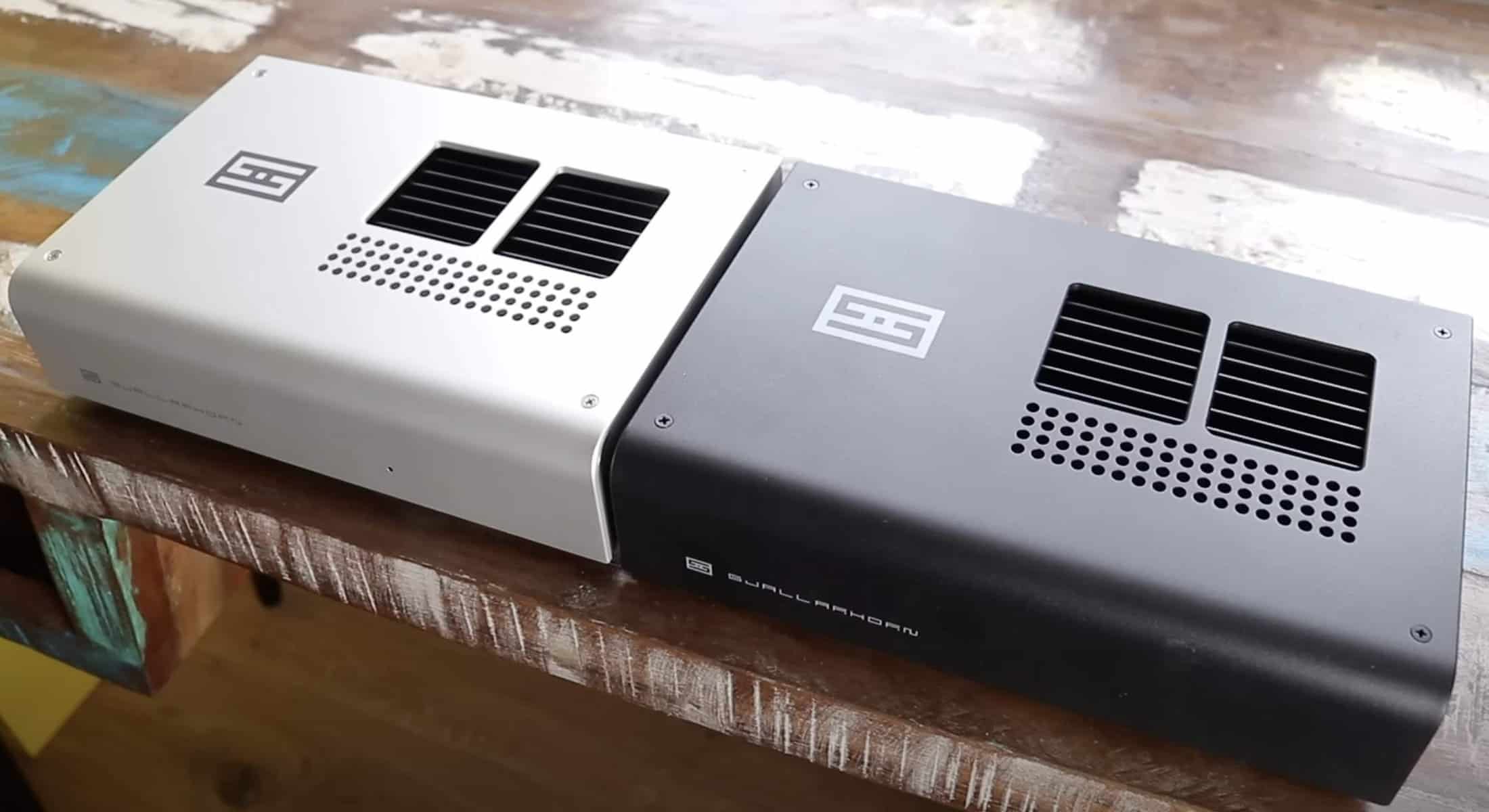
Why make do with one, when you could have two? Paul Rigby ups the ante and transforms this power amplifier into a pair of monoblocks
Which says a lot for this design’s versatility. Especially when you look at the price point for the Gjallarhorn. The company certainly didn’t have to add monoblock functionality and it’s actually arguable, looking at the price point and thus the relatively low build budget, that monoblock functionality could have made way for even better integrated component quality.
That said, the monoblock option remains. It turns this essentially near-field, small-room design into a larger-room amplifier system, capable of driving just about any HiFi system.
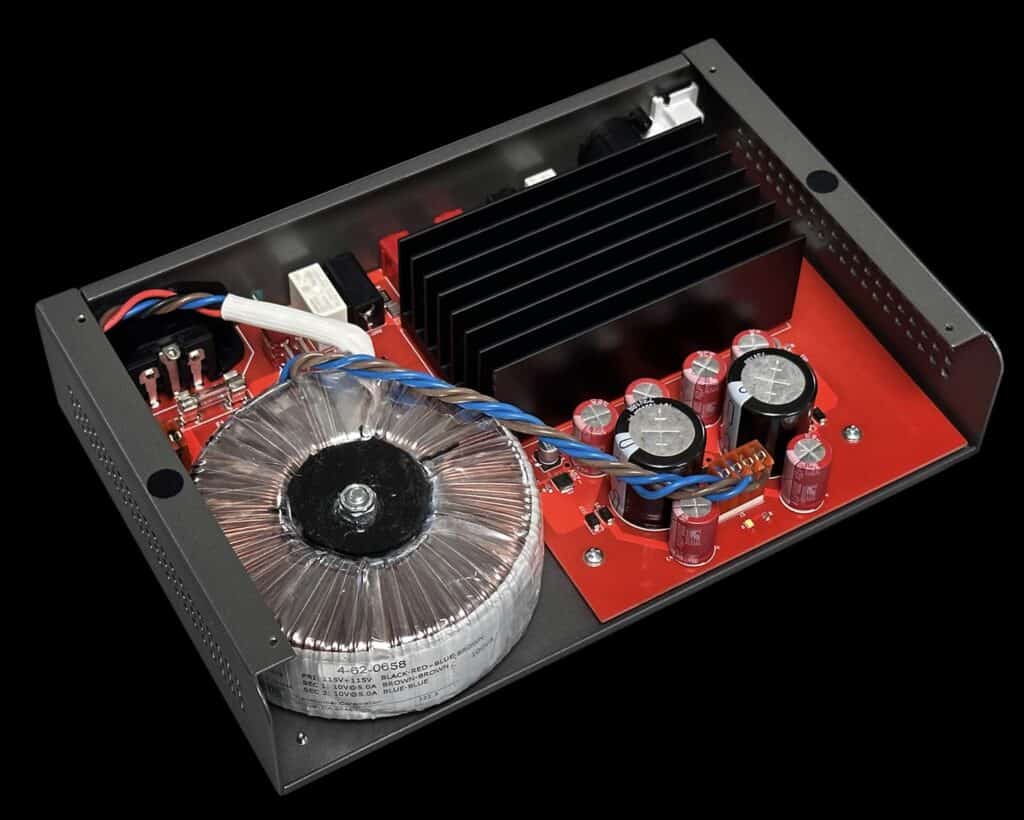
Check put my earlier Gjallarhorn review for full tech details but essentially here, in brief? You’ve got a Class A/B amplifier spanning 9” x 6” x 2.5” (230 x 152 x 66mm approx.) box here, weighing 8lb or just over 3.5kg. Power ups from a mere 10W to 30W per monoblock, in this configuration which should be enough for many systems around this price point.
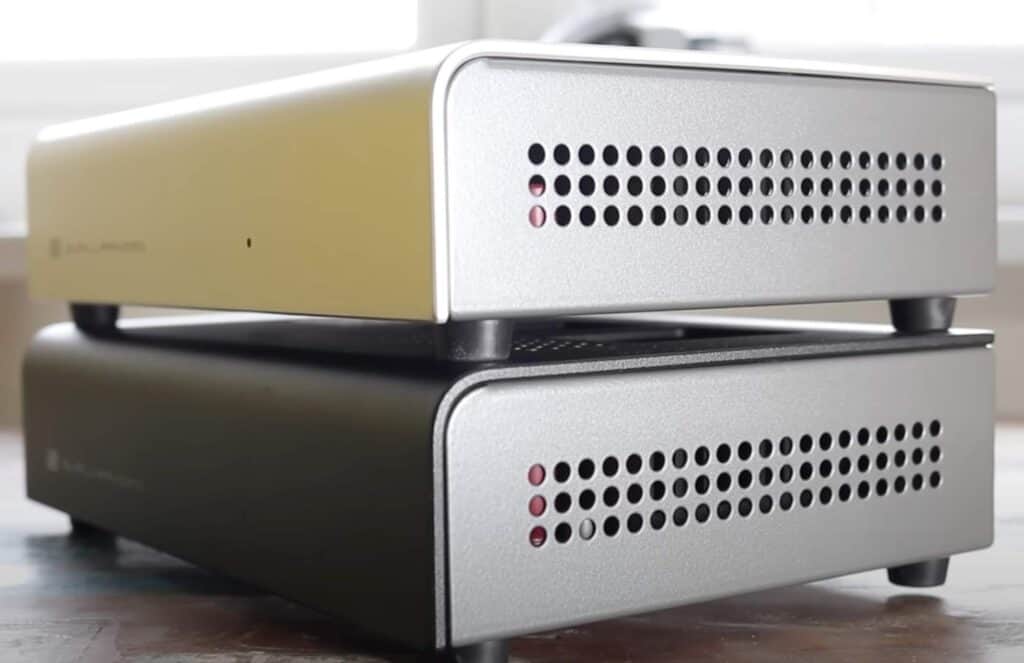
On the front is a power light. On the rear are speaker connections. For monoblock use, you utilise the central socket pairing for each monoblock speaker output.
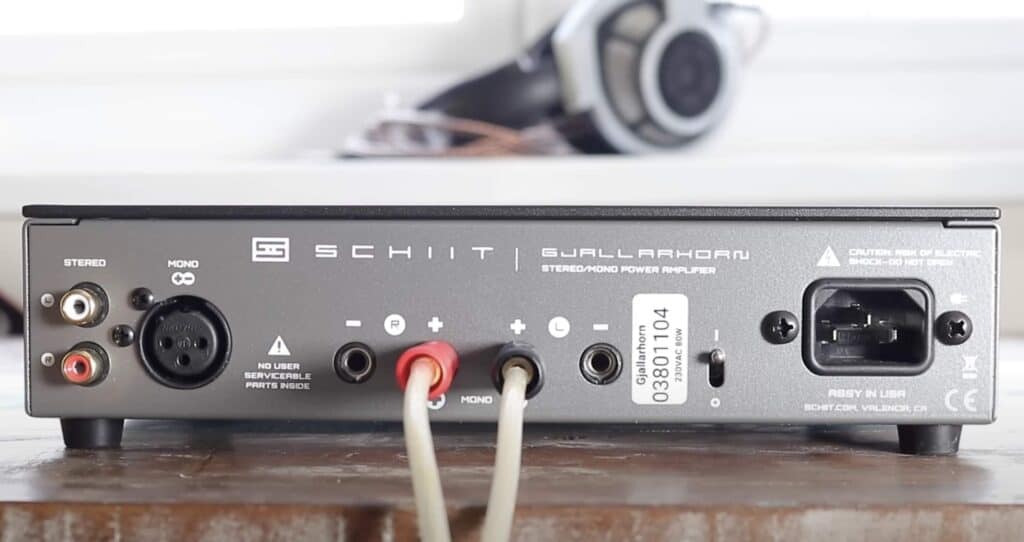
The one potential problem with this set up? Your set up. That is, you will need a pre-amp with balanced sockets because the Gjallarhorns can only be run as monoblocks off balanced connections. If that’s not an issue? You’re off and running.
PREPARATION
I chose vinyl as my first port of sound source call and a track taken from the new reissue from Starlite.One. Essentially music veterans, Suzy Starlite and Simon Campbell and this rather Divine Comedy-esque (or even The Doves perhaps?) outing with the track Saving Me. Consisting of a male vocal lead with female backing, aggressive bass guitar, lead guitar, percussion with busy cymbals, there’s also synth backing providing washes and effects.
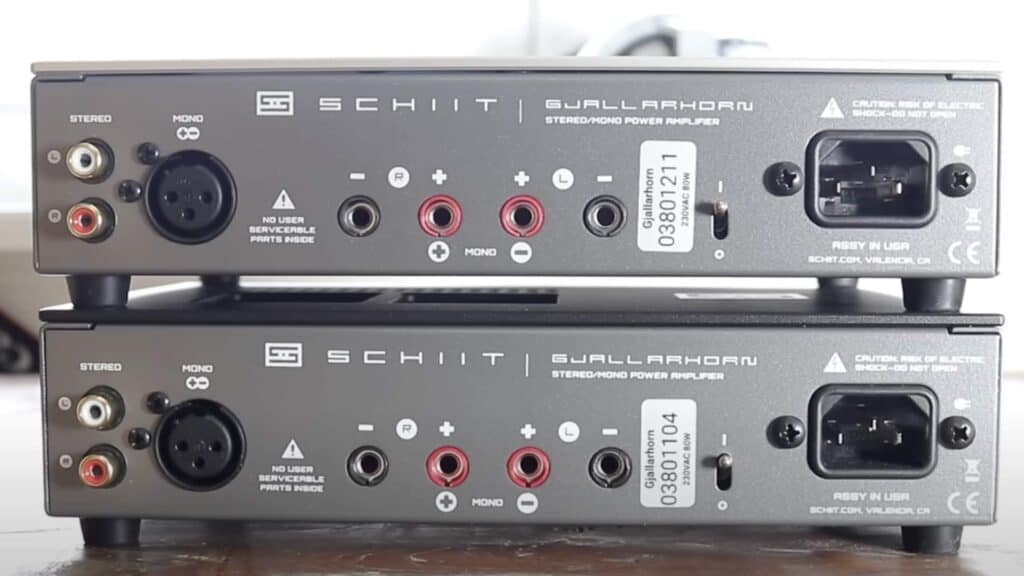
I then drafted in a pair of German monoblocks from Valvet called the A1r. These are older designs now but I remain firmly in favour of them. I’ve had them here for some time. Modern day and much larger Valvets normally retail for a little under £10k so they are serious designs from a serious company.
The A1r power amps I have here though are broadly three times the price of the Gjallarhorn, give or take a hundred or so. So the US units have a tough task ahead of them. The Valvets are Class A designs that run so hot, you could fry an egg on them.
SINGLE UNIT?
To remind you, as a single unit, a Gjallarhorns can easily fill a large room with music but the quality isn’t there. It strains. There is no oomph. There is no foundation to the sound, no real strength or grip.
Saying that, though.
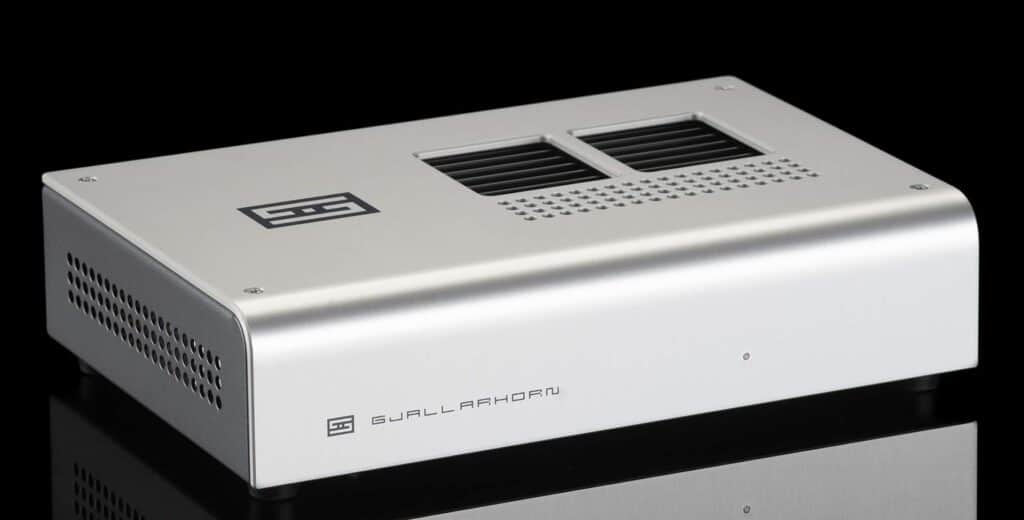
As a single unit, this design is really aimed and designed for near-field use, powering a HiFi in a small bedroom or bedsit or as a part of a simple AV set up with a TV, while sitting around 1-3m away from your speakers, maximum. In that mode, the sound presentation provides a completely different proposition. In near-field mode, the sound is big, heroic even. In near-field mode, the Gjallahorn is a fun listen with big bass, great clarity and a balanced presentation.
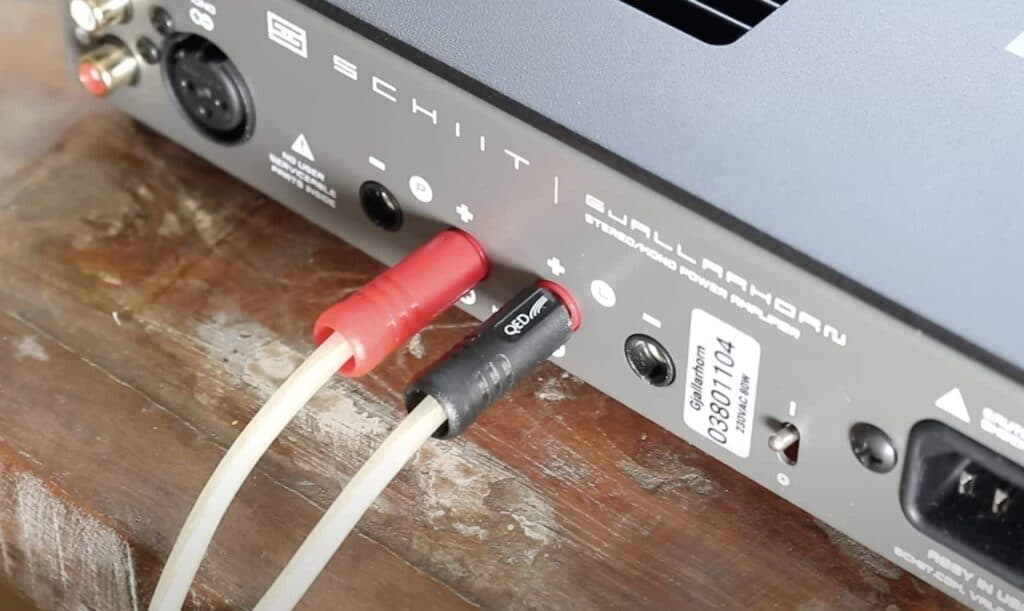
So the question is, if one unit works well as a near-field ampifier, can two Gjallahorns work in a larger room if you run them pair as monoblocks?
SOUND QUALITY
First impression of this twin monoblock set up? Impressive clarity. The low noise delivery was the big headline figure here.
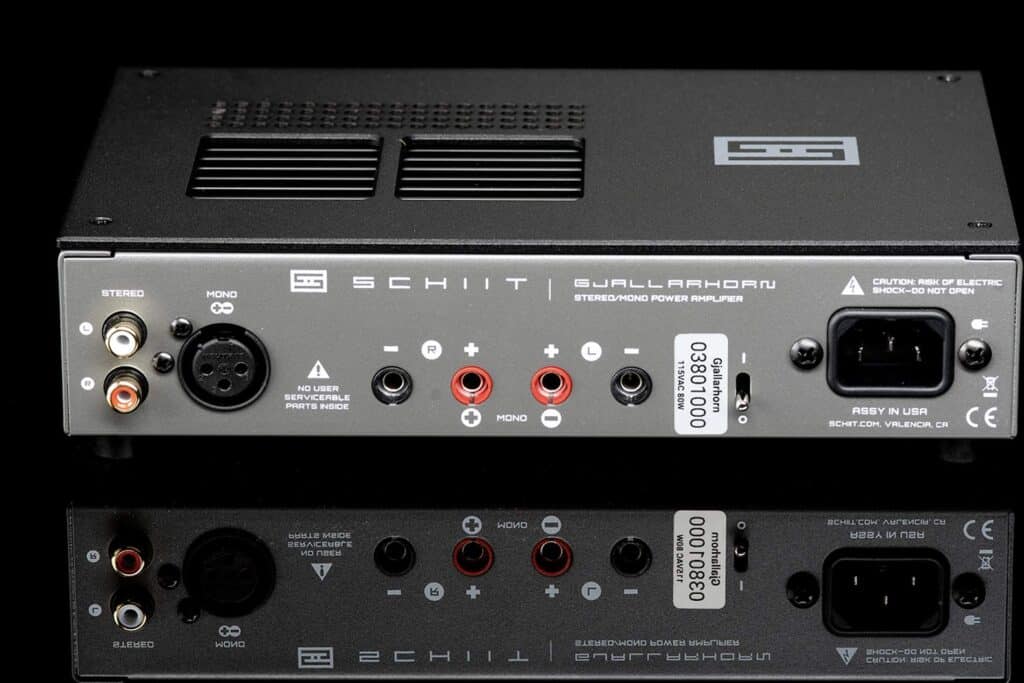
Now you might say, “But of course! It’s a balanced set up, isn’t it? Of course clarity is good and noise is low!” You may have even added a “Duh!” As an after thought, perhaps.
Well I’m here to tell you that no, actually. Balanced connections do not always provide great clarity and low noise. They should. They don’t always. And some offer one or the other. Not always both. I’ve heard many a HiFi company royally cock up balanced outputs. It’s is not a ‘given’. Some provide muddy mids, veiled treble and stodgy bass, if you really want to know.
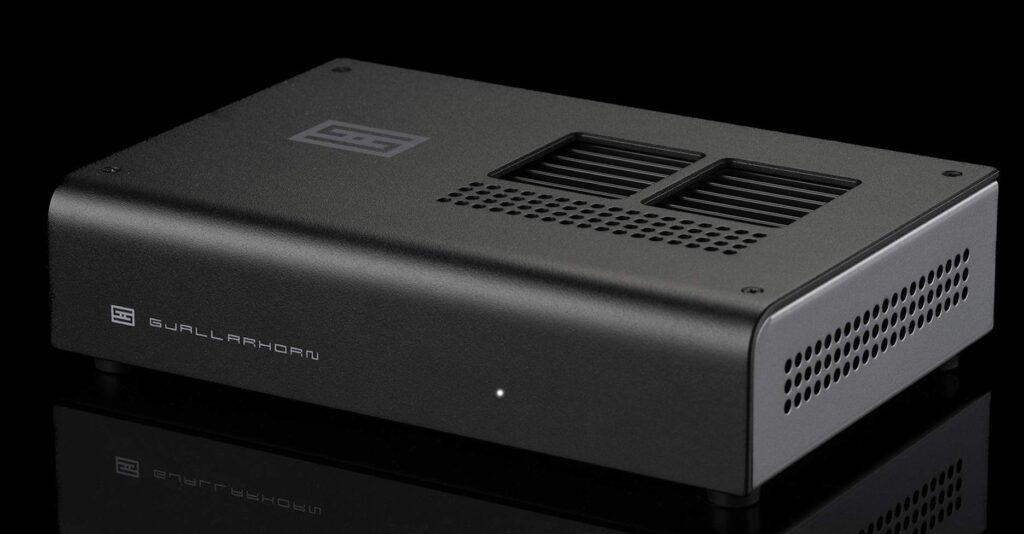
But here? Firstly, the Gjallarhorns lift the lead vocal so the delivery is articulate, open and coherent. Those busy cymbals I mentioned? Wonderful. They were open and spacious, neutral and balanced. Despite the activity surrounding them, the clatter. The drama. Despite all of that, the ear could still pick up an oasis of reverb from the cymbals. The bass guitar retained its aggression but now it delivered the energy with new focus and precision. I also loved the synth’s sense of isolation. The separation of the synth from the rest of the band added detail to this area because the synth had room to work in now. I now also heard new electronic textures, subtle they might have been but I could now discern them for the first time.
VIA CD
I then switched to CD and the new box set from Kirsty MacColl, See That Girl and the track They Don’t Know. I wanted to play this one because this single version is quite bright in the midrange, pinched around the treble area with thin bass. It’s a typical ‘for the radio’ production. So how did the Gjallahorns cope with this troublesome delivery?
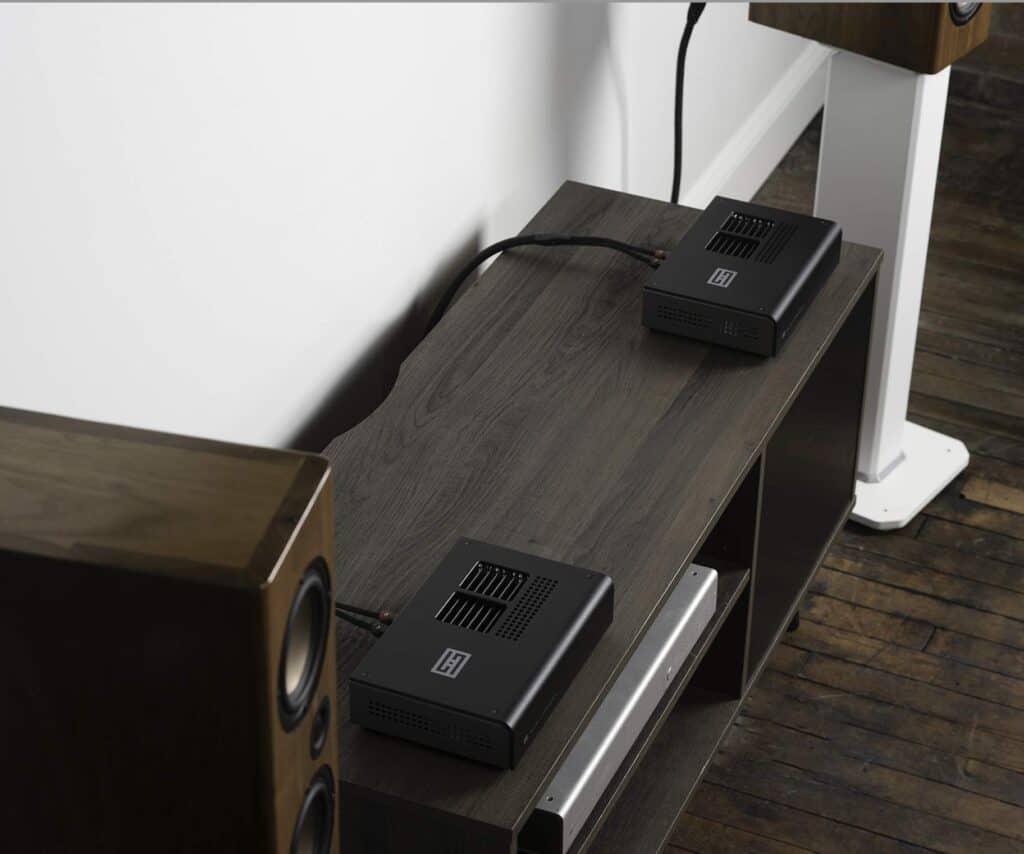
Very well. As I say, this is a neutral amplifier design so it’s not going to lie to you. The monoblocks tell you something is wrong but they don’t shred your ears in the process. They indicate that the soundstage has been strangled to the point of screaming but they don’t punish you for daring to listen. Frequency discipline is retained. Neutrality is paramount so the unruly mids are not allowed to be naughty and nasty. And that’s all you can ask for in this situation. The ‘amp done good’, in other words.
CONCLUSION
That the Gjallahorns are flexible enough to transform from a super near-field amplifier to a pair of top-quality stereo monoblocks is one thing but to do so at such a stupidly low price is quite astonishing. Do I prefer the Gjallarhorns to the more expensive Valvets in pure sound terms? Well. Yes. Yes, I do actually.

OK, you will need a balanced preamp for the Gjallarhorns plus the cabling and that might trigger extra spends but, even then, these power amplifiers offer incredible value for money. They are genuine giant killers, folks. Gotta say. And because they also present themselves within a small footprint, they can sit in a neat and tidy overall set up too.
One of the easiest recommendations and award-winning ratings I’ve had the pleasure to post for some time.
SCHIIT GJALLARHORN MONOBLOCKS
Price: £600 (for two units)
Website: www.schiit.co.uk
GOOD: clarity, focused bass, spacious treble, flexible design, small footprint
BAD: balanced only connection
RATING: 9
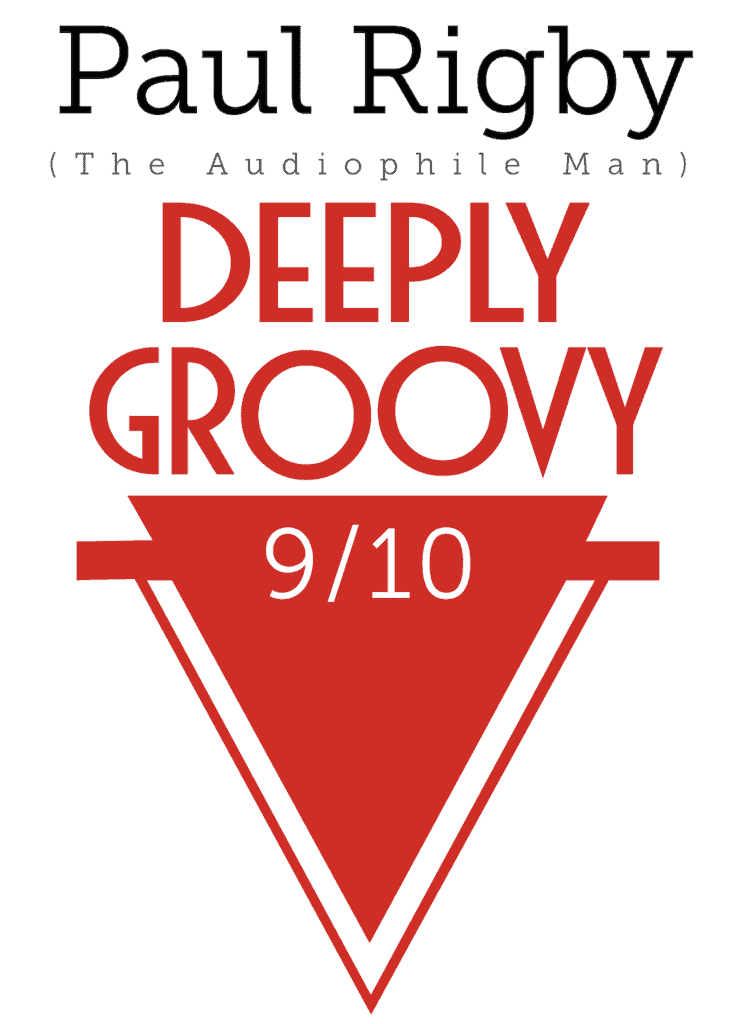
Don’t forget to check out my Patreon Page at www.patreon.com/audiophileman, for exclusive postings and more!]
REFERENCE
Origin Live Sovereign turntable
Origin Live Enterprise 12″ arm
Icon PS3 phono amplifier
Aesthetix Calypso pre-amp
Icon Audio MB845 Mk.II Monoblock Amplifiers
Blue Horizon Professional Rack System
Harmonic Resolution Systems Noise Reduction Components


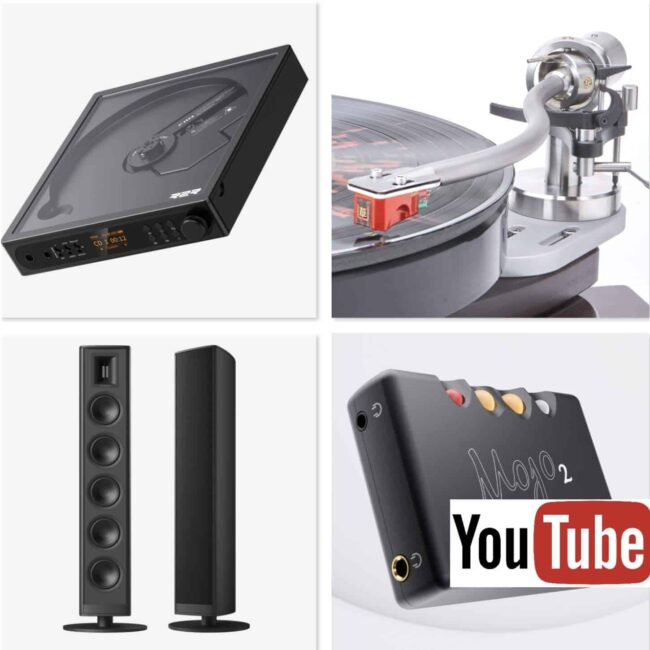
Thank you, Thank you! I got a Gjallarhorn a few weeks ago out of curiosity. My setup had 2 Quicksilver 60wpc amps driving vienna acoustic Haydn speakers. Lots of headroom, but I generally listen around 60db, +/- 5db, and felt the Quicksilver’s were overkill. Running thru a Promitheus TVC, I was getting enough volume. I added a Mani Heretic, after the TVC, with the TVC full open as an input selector. Sounded good! The Gjallarhorn in place of the Quicksilvers has continued to impress! Little drier and slightly clearer than the tubes. I leave the Gjallarhorn on a lot more! Less power, more better!
Not a problem, Alec – glad you’re enjoying yourself.